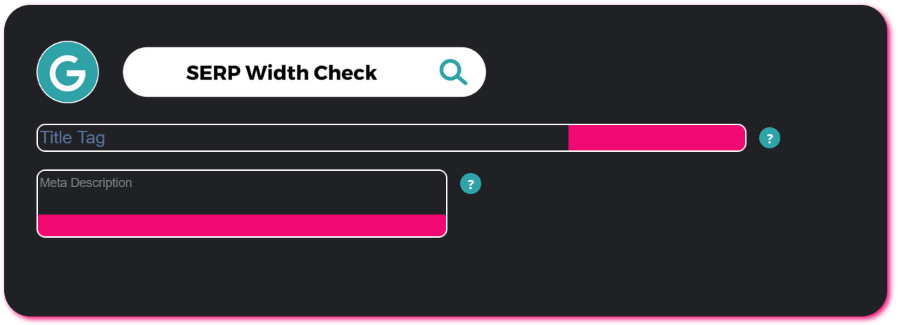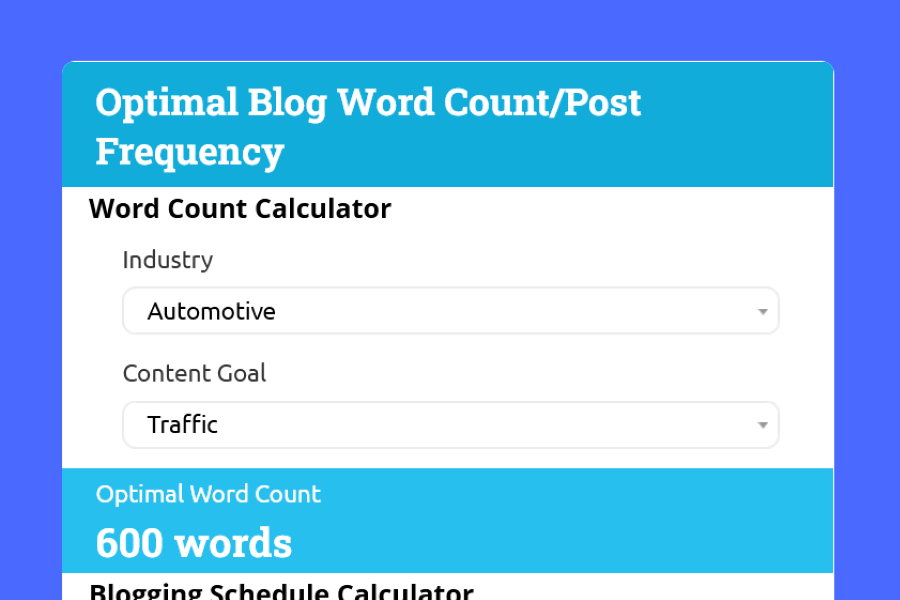SERP Width Check Tool While most SEO tools recommend generic character limits (60 for titles and 165 for meta descriptions), Google actually measures SERP snippets in pixels—600px for titles and 920px for meta descriptions. I built this custom tool to provide accurate, pixel-based validation with real-time visual feedback. Users can instantly see whether their meta content will be truncated in search results, eliminating guesswork and improving SERP optimization.
Web Development at People First Content
Web Development at People First Content As the lead web developer for People First Content, I designed and built the agency’s complete digital presence using Squarespace as the foundation. I enhanced the platform’s capabilities through custom HTML, CSS, and JavaScript implementations, creating interactive tools such as a meta title and description length checker and a keyword density calculator that provided potential clients with useful tools. My approach combined strategic UX thinking with hands-on development, ensuring the site not only looked professional but also served our clients’ needs by showcasing content strategy services. I handled everything from information architecture and responsive design to ongoing maintenance and feature updates, giving me comprehensive experience in full-stack web development within a content management system.
Social Media Cost Estimator Tool
Social Media Cost Estimator Tool Tool I built so potential social media customers could get an estimate of pricing before committing. Give it a try – it’s interactive!
Blogging for SEO Tool
Blogging for SEO Tool “How often should I post to my blog?””How long should blog posts be?” You could spend valuable time and energy learning from trial and error. Or… You can skip that and start competing with the top-performing blogs in your industry. We’ve crunched the numbers to find the optimal length and post frequency for your blog based on your industry and goals. Learn more about how we got these numbers. Blogging for SEO: Data and Explanation We really can’t overstate how helpful blogging is for SEO. Blogs increase your website’s search engine ranking and get your content in front of potential customers. It’s also a great way to build your authority and credibility online, which increases your chances of ranking higher in search engines. In addition, blogging provides an opportunity to share links back to your website, which can help improve its rankings in search engines and increase traffic. But there are more than a few rules and best practices that dictate how effective your blog is at improving your position on SERPs (search engine result pages). Beyond just the do’s and don’ts of writing content for SEO, many other things can increase your blog’s efficacy. These have to do with your overall content strategy. Namely, how much you post and how long your blog posts are. If you look for guidelines online, most places say, “It depends…” in response to those questions. Luckily, according to data, it mainly depends on a few key metrics and goals that are all quantifiable. Accordingly, we combined those into our “Blog Word Count and Frequency” tool. Of course, we would never ask you to take those numbers on faith, so we’ll explain why these are the most critical metrics and the logic behind them. How Long Should Blog Posts Be? This is probably the most significant stumbling block people come across when planning their blog strategy. You may know that the minimum recommended blog length is 300 words. Any less than that, and Google will likely penalize you for thin content. But that leaves you without an upper limit. Why your blog posts should have a word count Some say write as much as you need about a topic. But that’s impractical for a few reasons: So if you’d like a little stability in your content writing, having an average word limit for your content is very helpful. It can help you figure out if you should break up a topic into smaller parts, as well as help you allocate the time and resources you need. Because, as any college student rushing to hit a deadline will tell you, writing 1 page and writing 10 pages on a subject are entirely different situations. Factors that influence word count Now that we’ve established why having an average word count is necessary, let’s go through what elements affect how long your blog should be. Estimates have changed through the years as writing trends and expectations have changed. HubSpot currently puts the ideal blog post length at 2,100 to 2,400 words. But even HubSpot says this average isn’t a hard and fast rule. They broke down their top-performing content by content type for a more granular approach. These numbers are something to consider when planning your content strategy. However, we went with a different approach because this data doesn’t tell the whole story. Why your industry matters for calculating your blog word count 2,400 words may not seem long compared to a novel. But 2,400 words is about 10 double-spaced pages. And frankly, you don’t always want to scan through 10 pages to find the answer to your question. Even reading quickly, that’s 15 minutes of your time. HubSpot readers are there to learn about complex marketing topics full of statistics and research. So it makes sense that their content is in long form. But frankly, depending on your industry, your topics may not need to be 10 pages long. How-to articles, for example, highly depend on the industry. While their top-performing how-to content is 1,700 to 2,100 words long, trying to stretch a how-to piece about applying lipstick to 10 pages will result in a lot of fluff. That’s why your industry matters when figuring out ideal blog post lengths. So while HubSpot’s top performing posts averaged that length, that will not hold for everyone. How blogging goals impact your blog word count The second important metric to consider is what you’re trying to accomplish with your blog. When planning, you should always keep your purpose in creating a blog. If you say all of the above, you’ll want to cover your bases and hit the top-recommended word count for your industry. But doing well on all three is more feasible for some than others. For one thing, some content is just more shareable. For example, you could post a great tech article and only receive a few shares. That’s because people aren’t rushing to share that information online. In that case, you’ll probably want to focus on driving traffic to your site. Top performing content in traffic, number of backlinks, and shares on social media generally (although not always) have different recommendations for word count. So consider your goals when deciding on an average word count. This combination is why we chose Neil Patel’s research on top-performing content as the basis for our calculator. This chart breaks down the relationship between industry and performance. Patel looked at the content with the top 10% of traffic, social media shares, and backlinks to determine what content performs the best for each metric. If your business isn’t represented, don’t worry. We averaged all the numbers to give you a ballpark figure. Factors That Affect How Often You Should Post to Your Blog Now that you know how long your blog posts should be, it’s time to think about how often you should post. Goal: brand awareness vs. traffic This is one of the more significant divisions in how much you should post because




